I have always wanted to “blog” but I never have. It might be because I didn’t know how to start. Let’s fix that. I’m going to just start, and then see what happens. I really am going to do this—I might disappear for five years, but I’ll come back and continue like nothing happened.
So, hello everyone. (I know that nobody will ever read this, but I shall write it while pretending otherwise.) I’m Shane, the original SET-GRC-and-LTR8-128 fanboy. I feel as though I should apologize to everyone because I have completely neglected my clock website (ihbusboy.wordpress.com) for the past three years or so, since I started my current job. My clock system has continued to click and hum away in the background, though, and has even picked up a few more friends along the way.
Let’s start by taking a quick look at the more rare things that I have acquired during the gap. (All pictures taken on a cell phone camera, a cheap LG Android phone. If I had paid attention to lighting, the pictures would be just as good as my low-end Nikon that I used for all those clock pictures. I have bought an older DSLR camera, also, that I will be messing around with in the future.)
Standard Electric Time No.1 – 110v – RMT-SQ-16
Did you know that SET made 16-inch square clocks as part of their modern metal case series? I didn’t. (As of writing, my site still claims they didn’t.) Oh but they totally did. Here’s an RMT-SQ-16 (surface-mount, even!) from 1969. It’s in very rough shape, and I way overpaid for it, but it’s the only one I’ve ever seen, so I had to. The weather damage suggests that it was originally used on an outdoor wall or in an indoor pool room (note the piece of rubber added to seal the movement). It appears to be a GRC at first glance, but it’s not; I’m convinced it was a stand-alone synch clock from the factory—note the original set stem, like what they put on the earliest original GR movements. However, the movement has the full-on Johnson level of quality (lack of) and the stamp on the back plate does say GRC.
Standard Electric Time No.1 – Series – RMT-12
Here is a non-reset impulse movement with coils wound for series operation that was made in 1955. I can only think that this was a super-special order, and there can’t be too many of these around. I used a AA battery to confirm that the movement operates very smoothly (too bad I can’t use it—I’ll have to stick an AR2 movement in there).
Standard Electric Time model 700 fire pull with backbox and T-key
I have also bought about half a dozen of these iconic round “local fire alarm” pulls—including a couple with the original surface-mount backboxes—along with a seemingly authentic “T-key” (as I vaguely remember it being called) that opens them. (Note that the handle on the key is the same shape as the Standard logo!) That was the first and only time in at least a dozen years that I have seen that key for sale, so I had to snatch it up the first day, even though it was way overpriced. I would consider paying the same for a second one, though—I always like having spare keys!
I intend to construct a simple (no backup power, no smoke sensors, no use as a life-saving device) fire alarm panel to control a bell in march-time.
Standard Electric Time No.1 – AR2CA movement
Ever seen one of these? It’s an AR2A with 12-hour correction. The only time I had ever seen or heard tell of these previously (or since, actually) was a SET bulletin from 1966 that was posted somewhere on the internet back in the day. I was under the impression that they may have never actually made this system. That was wrong. Here’s proof!
The timing is based on the GRC (the –C part, specifically), which gave me the idea to add 12-hour correction to my AR system, using only one microswitch in a “pilot” movement to control the correction pulses. I even built the pilot movement (but never got around to adding it to the site)—I was shocked by how similar the real one is to the one I built a year before I had ever seen one.
Well, I took the opportunity to buy two of these movements (along with a handful of other loose no.1 AR movements to mess around with), so now my “AR-C system” (tentative name) pilot control movement will actually be an original super-rare AR2CA movement. How cool is that? When I get around to actually building that new pilot clock, that is.
Dukane 6A212 cabinet
I have always been extremely partial to the first style of modern (post art-deco) PA speaker cabinets made by Dukane—they are the best looking speakers ever, in my opinion, especially when mounted alongside the modern SET clocks. I learned their model names (the standard 8-inch cabinets are 6A208 or 6A209, not entirely sure about the difference, and the latest art-deco cabinets are 6A108—all originally contained 9935A/B drivers, so eBay people often call them all by that number), and bought about half a dozen of the standard 6A208/9 variety.
I also had the incredible fortune to be able to buy a pair of new-old-stock (in the original boxes!) 6A212 cabinets—that’s right, the 12-inch model, often used in school gymnasiums. I had never seen one of these before (only the older art-deco cabinets in this size). Only one of them is still new-in-box, as I could not possibly resist. My 6A212 shown above, temporarily crammed into a funny corner, is loaded with an Atlas C12AT60 (I think that’s the number; a coaxial 2-way set with a rather large 60w matching transformer)—and is next to a 16-inch clock.
disassembled PA system
Every time I walk by and glance at this, I wonder what I could possibly be thinking. Just before I started my current job—almost three years ago—I disassembled the preamp/intercom head unit for my building PA system, with the intention of rebuilding it properly. Its pieces are sitting in a box, the little Atlas amp on top is hotwired to the speaker panels, and I haven’t been able to enjoy a timed chime in three years. I have acquired some nice relays and bases to include in the control panel, along with a hardwired mp3 player board to deliver the chime, however—if I can ever get around to doing anything about it!
What have I been thinking?
The Oubei Gakuen Clock System Power Supply
Within a month or so before I took the PA system apart (I was unemployed, so I had plenty of time), I also designed and constructed this, the official Oubei Gakuen Clock System Power Supply. I even did most of the write-up for the website, but all of that was lost in a hard drive failure before I could upload any of it. (My raw photographs were stored on a different drive, so I still have the unedited construction pictures. I actually lost the original edited picture files for the entire website, along with all the original write-ups. I really should download a copy of everything sometime.) Note the Cramer 60rpm synchronous timing motor—that’s the other key to 12-hour correction on my AR system.
So, that’s a short summary of a few things you will find on my clock site pretty soon (I hope!).
Standard Electric Time No.1 GRC FMT-12 “Flexchron” with buzzer (back)
Anyway, this is a clock I bought randomly that just arrived the other day. I have a rule: “No more 120v FMT-12 GRCs. Period.” (That rule will stand until I get more of those list 171 backboxes. Anyone want to send me a full school of them? I will give you money.) Well, I guess I had to make an exception because of the Ingraham Z motor and CA-1 buzzer, both of which I feel that I still need more. And, oddly enough, the buzzer has the 24v coil. Why?
The adventure continues…
What am I going to blog about? Things that I like (hopefully some things other than clock systems), maybe things that I do or see, if I ever end up doing anything interesting. It won’t be a full diary, I promise. I hope to keep blog entries shorter than this—and I intend to edit my website to be less verbose (again)—but who am I kidding? I use a lot of words when I write. It’s a fact.

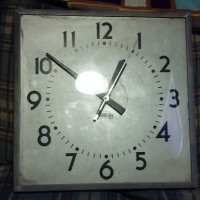
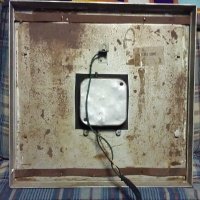
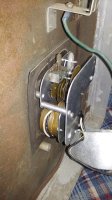

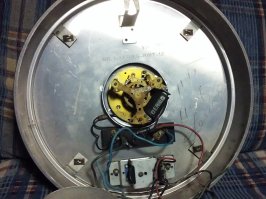
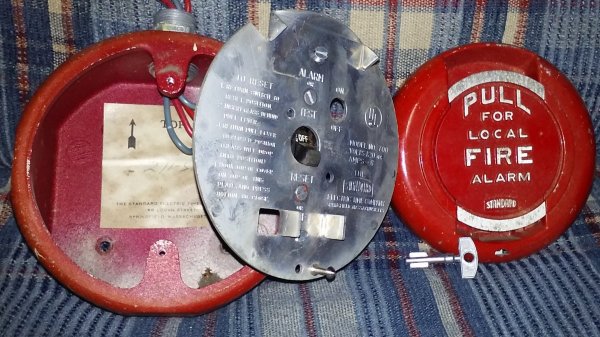
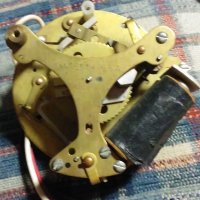
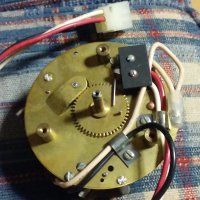
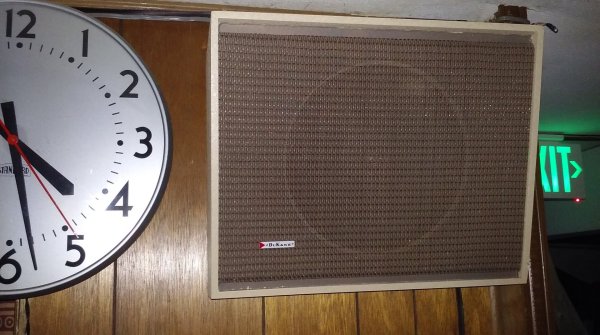
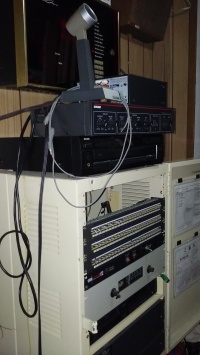

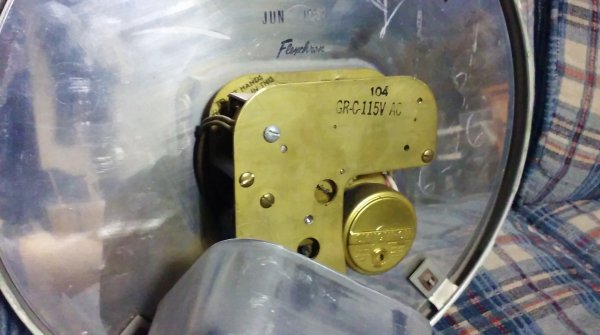


Like it! That lighted exit sign fits right in to your setup.
I wanted LED nightlights, but… those are better.